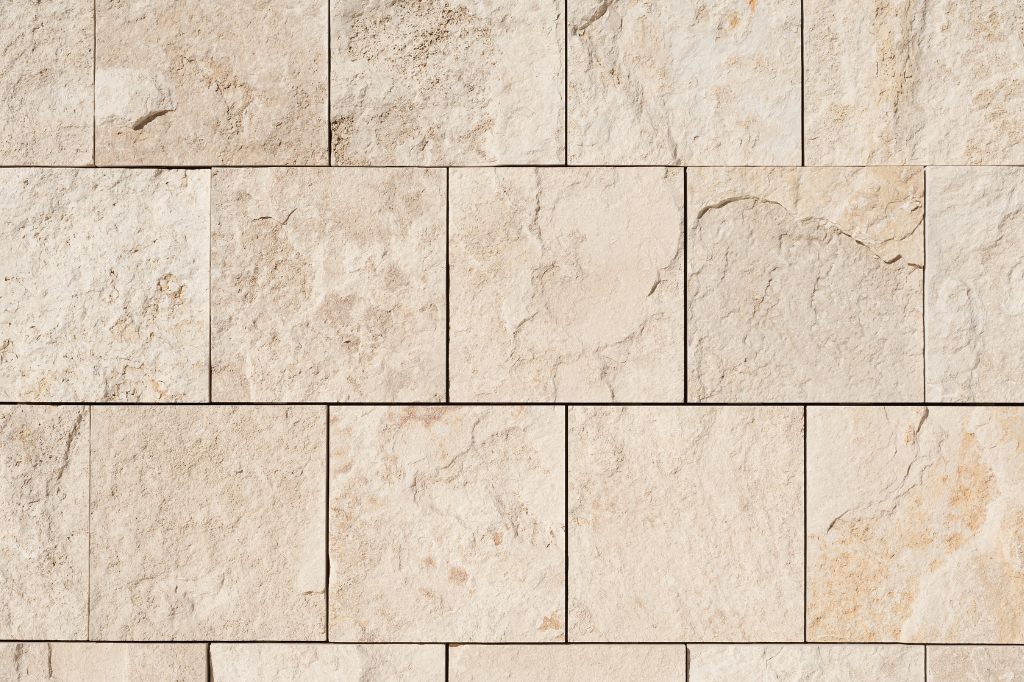Christmas Hours: We will be closed from 1pm on the 24th of December for the Christmas holidays, reopening as normal on the 2nd of January.

Travertine is an attractive choice, but it does have a few drawbacks. The natural holes and pores in the stone mean it takes in more moisture than denser paving, which can lead to staining or frost damage if it isn’t sealed. Being a softer stone, it’s also more vulnerable to scratching, chipping, or wearing down faster in areas with heavy use.
Because of this, travertine is better suited to patios, terraces, and decorative features in more sheltered spots, rather than driveways or high-traffic walkways.

Avoid using acidic cleaners, bleach, or harsh chemicals on travertine, as these can etch the surface and cause permanent dulling. Abrasive brushes or scouring pads should also be avoided, as they can scratch the stone. In winter, do not use de-icing salts, as they can break down the stone and cause pitting.
Instead, clean travertine with a pH-neutral product such as Rob Parker’s Best Patio Cleaner and seal it with Rob Parker’s Best Patio Sealer to help protect against water penetration and staining.
When maintained correctly, travertine paving can last for decades. Its durability depends on a well-prepared, free-draining base, quality installation, and regular sealing. In a sheltered patio setting, travertine can hold its colour and finish for many years, though in more exposed areas it will age more quickly compared to limestone or porcelain.
Applying a fresh coat of sealer every few years helps preserve its appearance and offers protection against frost damage.

Compared with limestone and especially porcelain, travertine is higher maintenance. It needs sealing during installation and resealing over time, regular cleaning with stone-safe products, and quick attention to spills to avoid stains.
That doesn’t mean it’s unmanageable, but it does require more care than most paving materials. For those who want the same look without the same level of upkeep, porcelain is often a better choice.
Travertine isn’t as widely used in UK projects these days, but it still holds appeal in the right setting. While it may not suit sleek, contemporary designs, it works beautifully in rustic gardens or spaces looking to capture a Mediterranean feel. Rather than being a go-to paving option, travertine is now more of a specialist choice — selected when its natural warmth and textured finish are an important part of the overall design.

No — travertine is not marble. While both are natural stones formed from limestone, they develop differently. Travertine forms in mineral springs, creating its porous, pitted surface.
Marble, on the other hand, is limestone that has undergone heat and pressure over millions of years, giving it a dense, smooth, and crystalline structure. Travertine is sometimes marketed as “travertine marble,” but geologically it is a separate stone type.
Generally, no. Travertine is usually more affordable than marble, both in material and installation costs. Marble’s higher price reflects its density, polish, and luxury status in design. That said, premium travertine can still be a significant investment, especially when imported or used in large areas.
Travertine is a natural stone, but it is often cut and sold as tiles or paving slabs. The word “tile” refers to the finished format, not the material itself. Travertine tiles are popular indoors for floors and bathrooms, while larger travertine paving slabs are used outdoors for patios and garden designs.

Travertine naturally absorbs some moisture through its pores, but in normal use this isn’t a concern — the stone may darken a little and then dry out again. Issues are more likely when water remains on the surface or saturates the bedding layer over time. Constant damp conditions can encourage staining, algae, and mould growth, while outdoors they may also result in freeze–thaw damage during colder months. Ensuring good drainage and applying a travertine sealer at regular intervals will help protect against these problems.
Water alone doesn’t “damage” travertine. The risk is when moisture penetrates deeply and then freezes (outdoors), or carries dissolved contaminants that leave marks (indoors or outdoors). In the UK, poor drainage and unsealed stone are the usual culprits behind spalling, edge breakdown, and stubborn stains.
Unsealed travertine absorbs water and spills more readily, so stains set faster, algae takes hold outdoors, and freeze–thaw stress is more likely. Sealing doesn’t make it waterproof, but it buys you time to clean up and helps the surface shed moisture.
If you’re drawn to the natural appeal of travertine but want lower upkeep, alternatives such as porcelain, sandstone, or limestone itself may be worth considering. And whichever material you choose, correct installation, drainage, and sealing will always be key to making your paving last.
At Stoneworld, we supply a wide range of premium paving options for both homeowners and professionals. Our team can guide you through selecting the right stone, ordering samples, and planning your project so that your paving not only looks great but also stands the test of time.